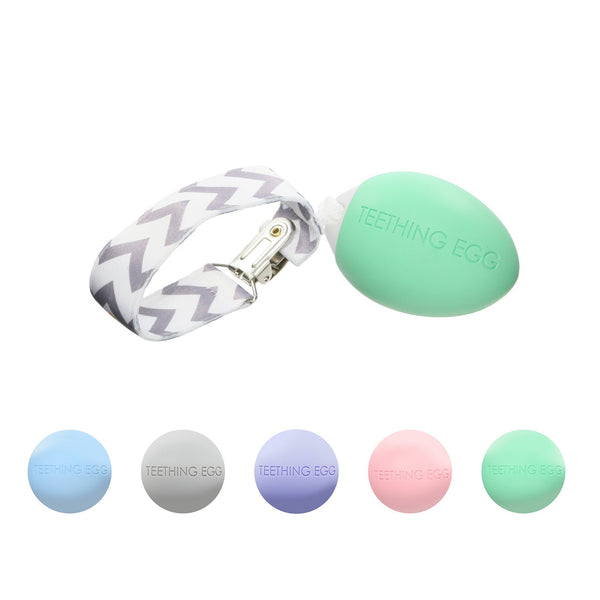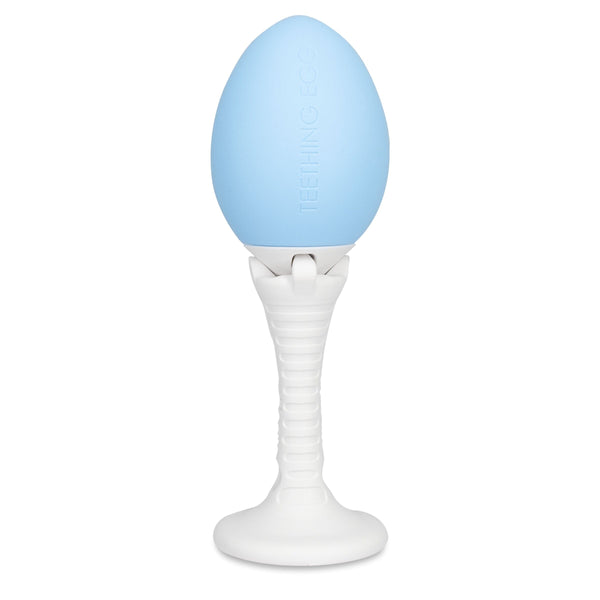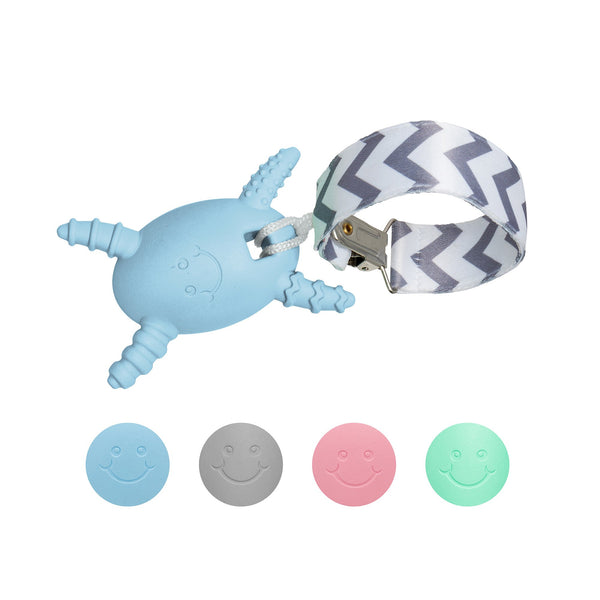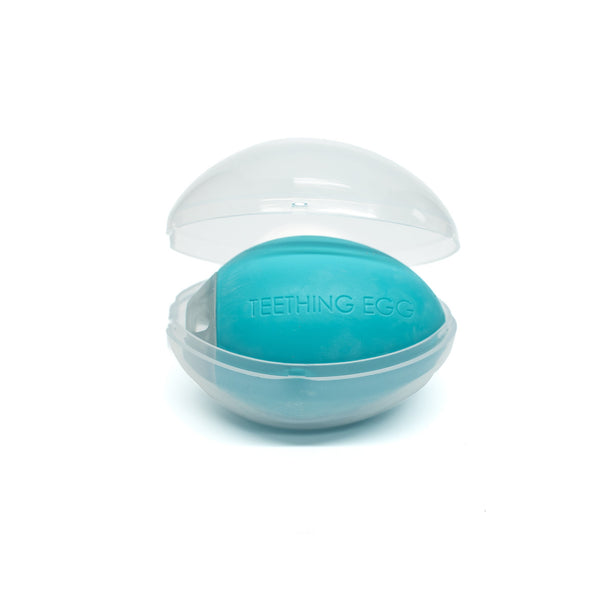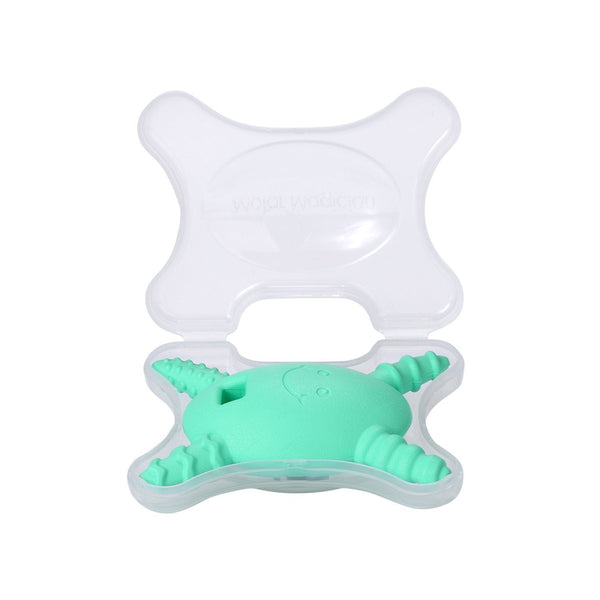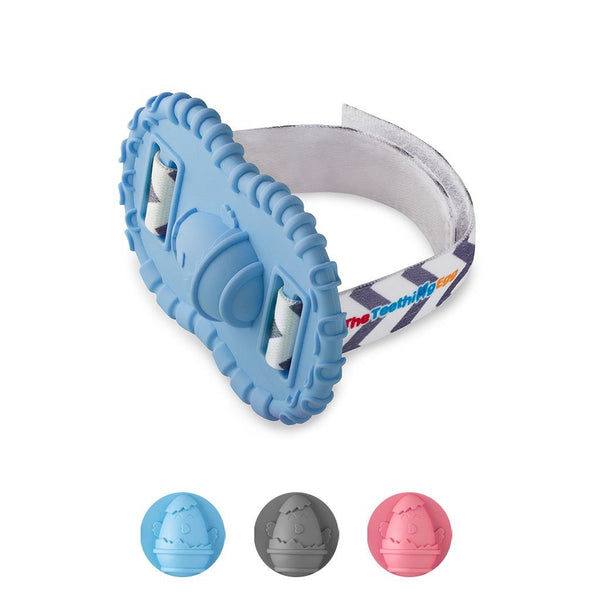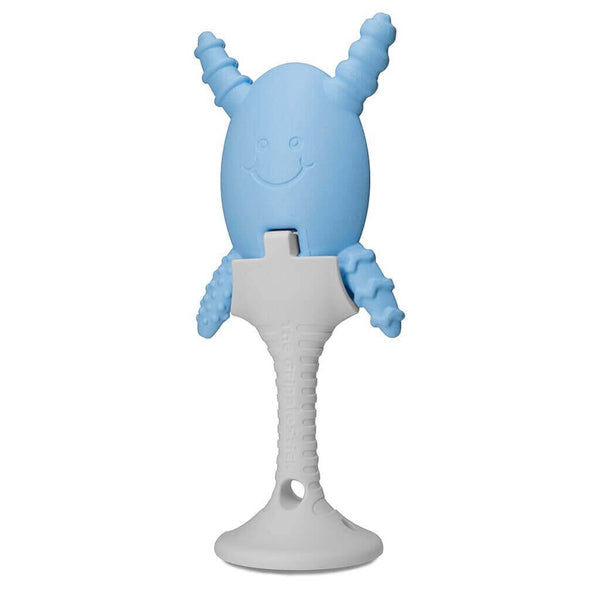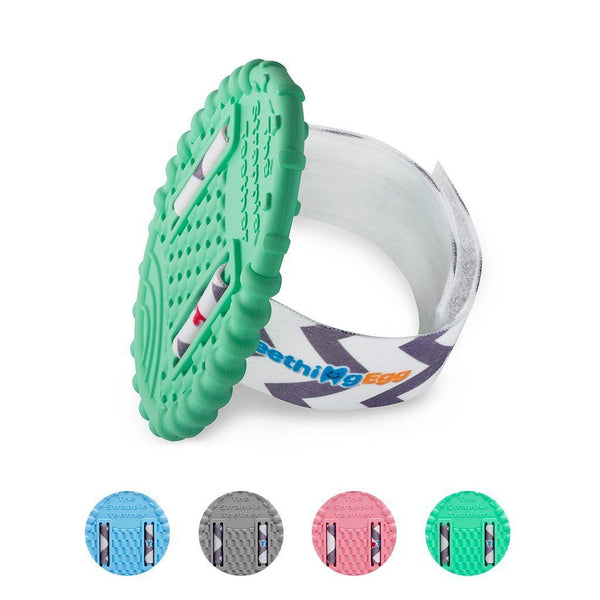What is Egg in Sock Teething and how does it work?
The "Egg in Sock" teething method is a home remedy for teething babies which seems to have been around for a while but gained recent attention on the internet through social media platforms like Facebook and Tik Tok.
- The method involves placing a raw egg (still in its shell) inside a baby sock, and then hanging the sock above the door to the baby's room.
- A mother named Kate Garrett brought attention to this method on Facebook, sharing her experience of how it helped her baby sleep through the night.
- The theory behind this method is that eggs can absorb up to seven times their weight in carbon dioxide, which is believed to put pressure on the gums, causing teething pain. By reducing the carbon dioxide in the room, it's thought to lessen the pressure on the gums, thereby reducing the pain associated with teething.
- A TikTok user by the name of mommyandme032 shared a video demonstrating this method, which has been viewed and favorited hundreds of thousands of times. Some commenters on the video mentioned that their grandparents and parents used this method and found it effective.
- However, there's also skepticism around the method, with some suggesting it might just provide a placebo effect. There's no scientific evidence provided to support the efficacy of this method.
This method seems to be more of a social media trend or a traditional home remedy rather than a medically recognized solution for teething discomfort. It's always advisable to consult with a healthcare professional for safe and effective solutions to alleviate teething discomfort in infants.
The public's reaction to the Egg in Sock teething method vs Science
Reactions to this method are mixed. Some parents swear by it, while others say it didn't work for them.
- The post by Kate Garrett went viral, with many parents trying it out. Some reported better sleep for their teething babies, while others saw no improvement.
- Emily Oster, an economics professor and parenting author, debunked the theory, explaining that an egg can't absorb a significant amount of carbon dioxide to make a noticeable difference in a room's CO2 levels. She mentioned that while lowering CO2 levels in a room can improve sleep, the reduction achieved by the egg in a sock method is negligible compared to, for instance, opening a window to ventilate the room.
@strawberrynmommy EXPLAING THE EGG IN THE SOCK FOR TEETHING 🥰💗 you are welcome
♬ original sound - THE PISCES CREW
So What do we think about the Egg in Sock Teething method?
- The "Egg in Sock" method is more of a viral home remedy with mixed anecdotal evidence regarding its effectiveness.
- There's no scientific backing for the method, and the theory behind it has been debunked.
- It's always advisable to consult with healthcare professionals for medically sound advice on managing teething discomfort in infants.
This method seems to be a part of the myriad of home remedies that circulate among parents, especially on social media platforms. The lack of scientific evidence and the debunking of the theory behind it suggests it's likely not a reliable or effective method for alleviating teething discomfort.
Here is an egg that's proven to help with teething, The Teething Egg.
What are modern proven ways to ease a baby's teething pain?
Teething can be a challenging time for both babies and their parents. However, there are several modern, proven methods to help ease a baby's teething pain:
-
Cold Items:
- Cold teething rings, spoons, or clean wet washcloths can be soothing. The cold can numb the gums and ease the discomfort. Make sure the items are safe for the baby to chew on and are not a choking hazard.
-
Teething Toys:
- Teething toys made of soft rubber or silicone can be very helpful. They provide a safe and clean chewing surface for the baby. Here at The Teething Egg we offer a variety of teething toys and accessories which can aid in making your babies teething journey a more pleasant experience.
-
Gum Massage:
- Gently massaging the baby's gums with a clean finger can provide relief from the pressure of an emerging tooth.
- Over-the-Counter Pain Relief:
- Over-the-counter pain relievers like acetaminophen (Tylenol) can be used, but it's essential to follow the dosing instructions on the packaging or as directed by a healthcare provider.
-
Topical Teething Gels:
- Some topical teething gels can provide temporary relief, but it's advisable to use them under the guidance of a healthcare provider. The FDA advises against using benzocaine-containing products for children under two years old due to potential risks.
-
Maintain a Regular Routine:
- Keeping a regular sleeping, eating, and playtime routine can help keep the baby comfortable and distracted from the discomfort.
-
Comfort and Distraction:
- Offering extra cuddles, playing together, or providing new toys or books can distract the baby from the discomfort.
-
Consult a Pediatrician:
- If the baby seems particularly uncomfortable or if you're unsure about the best way to alleviate teething discomfort, it's always a good idea to consult with a pediatrician.
-
Avoid Sugary or Hard Foods:
- Avoid giving the baby hard foods that could potentially harm their gums or sugary foods that could lead to tooth decay.
-
Maintain Good Oral Hygiene:
- Even before the first tooth emerges, it's good to wipe the baby's gums with a soft, damp cloth. Once teeth start to appear, brush them with a soft-bristled toothbrush and water.
The Egg in Sock Teething method, while not scientifically proven, is harmless enough for you to try and discover its effectiveness for yourself. Should it not yield the desired results, you can always revisit and explore the myriad of scientifically proven and affordable alternatives that we have mentioned above.
